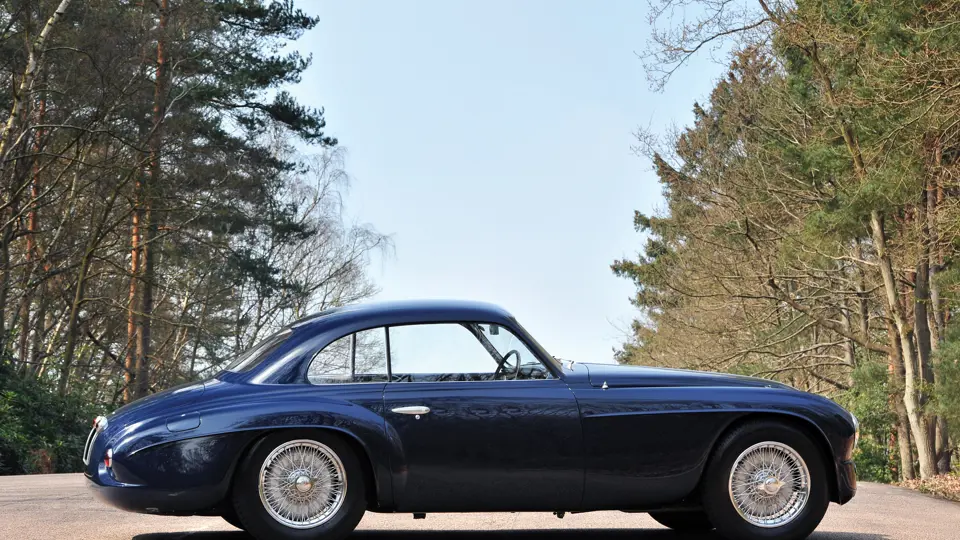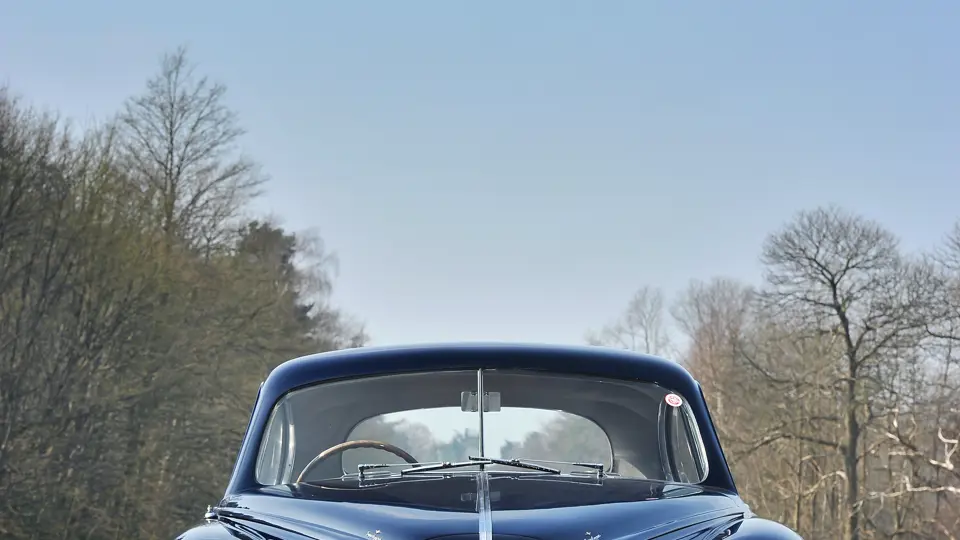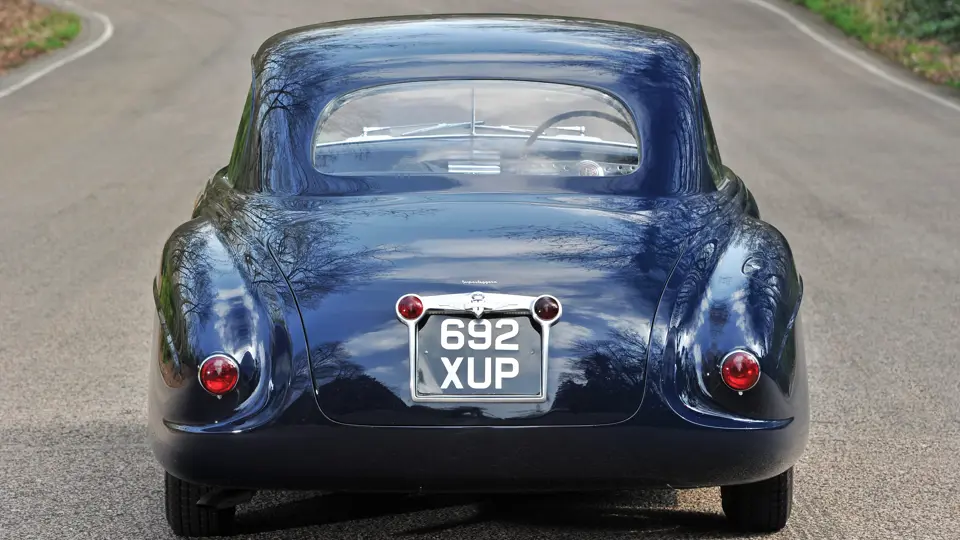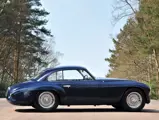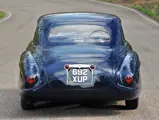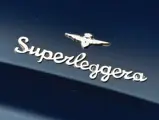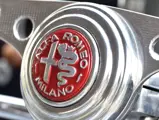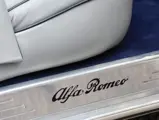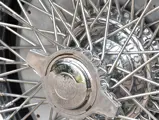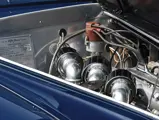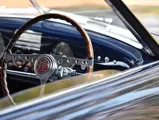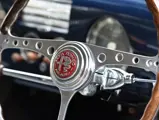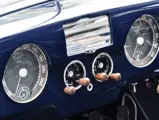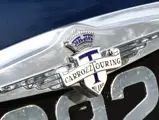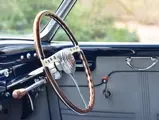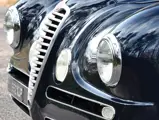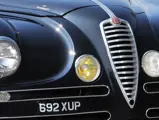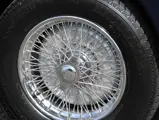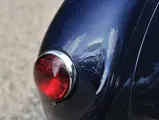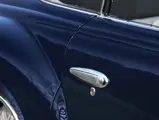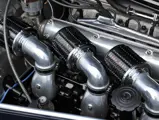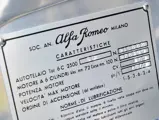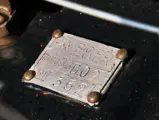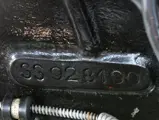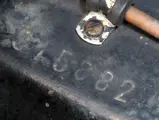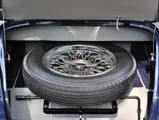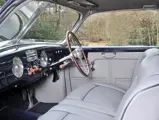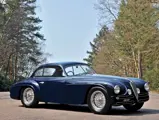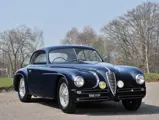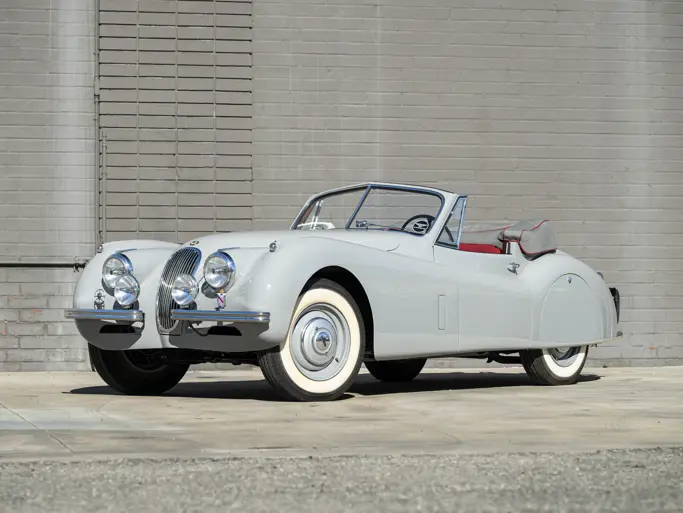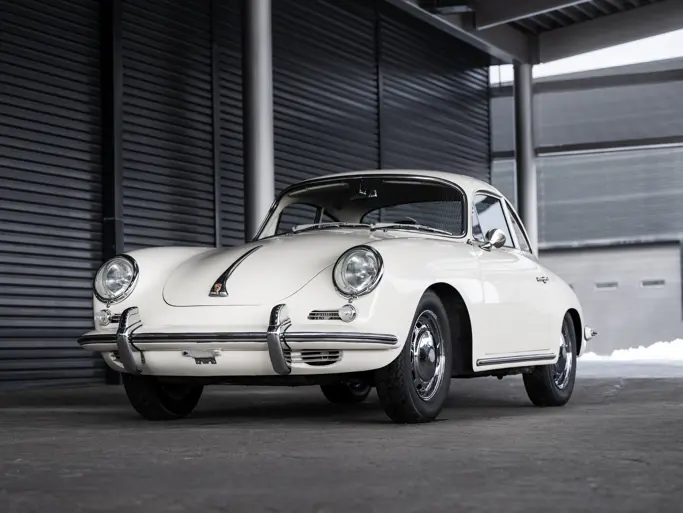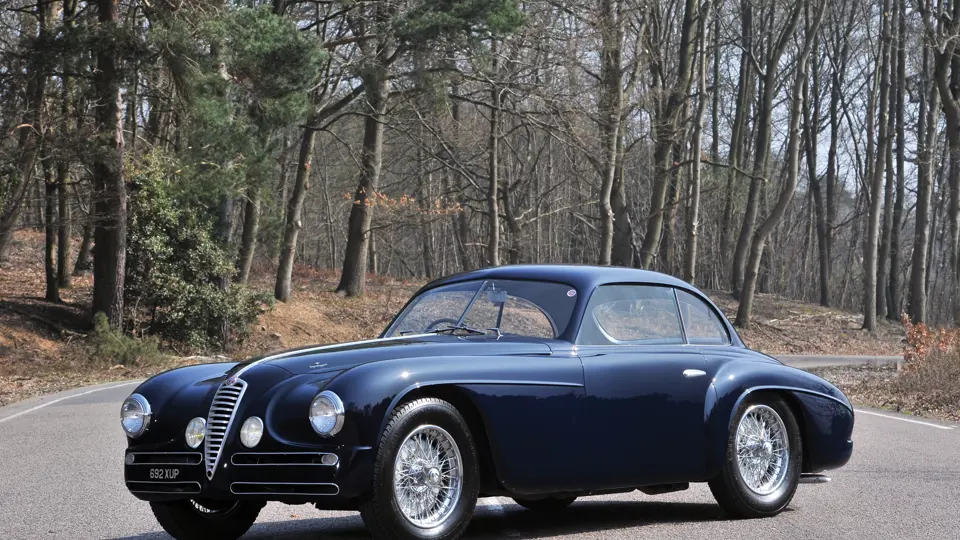
1949 Alfa Romeo 6C 2500 SS Villa d’Este Coupé by Touring
{{lr.item.text}}
€784,000 EUR | Sold
{{bidding.lot.reserveStatusFormatted}}
- One of 36 built and the last hand-made Alfa Romeo of its era
- Beautiful older restoration and well-maintained since
- Formerly owned by Dutch racing legend Toine Hezemans
- A proven tour and concours candidate; Mille Miglia Storica participant
- Una di 36 auto costruite e l'ultima Alfa Romeo artigianale della sua epoca
- Auto restaurata in passato e sempre mantenuta in condizioni eccezionali
- Originariamente nella proprietà del leggendario pilota olandese Toine Hezemans
- Candidata a molti concorsi e tour storici; presente anche alla Mille Miglia Storica
110 bhp, 2,443 cc DOHC inline six-cylinder engine with three Weber carburettors, four-speed manual transmission, coil-spring independent front suspension, independent trailing arm torsion-bar rear suspension, and four-wheel hydraulic drum brakes. Wheelbase: 2,700 mm
110 cv, 2.443 cc, motore sei cilindri in linea, doppio albero a camme in testa, tre carburatori Weber, cambio manuale a quattro velocità, sospensioni anteriori indipendenti a molle elicoidali racchiuse nei cilindri, sospensioni posteriori indipendenti a barre di torsione longitudinali e freni a tamburo a comando idraulico su tutte e quattro le ruote. Passo: 2.700 mm
For Alfa Romeo, the 6C 2500 was the swansong of its era. When it debuted in 1939 as the third series of Vittorio Jano’s legendary inline six-cylinder Alfas, the engineers involved could never have imagined that it would signal the end of the line for hand-built Alfa Romeos.
Thanks to engine upgrades and a vastly improved fuel delivery system, the 6C 2500 was the first road going Alfa Romeo capable of 160 km/h. Additionally, it benefited from four-wheel independent suspension, with parallel trailing arms and coil springs in the front and swing axles with torsion bars at the rear. Alfa Romeo continued its tradition of offering several levels of tuning, starting with the 87-horsepower Turismo, moving up to the 110-horsepower Super Sport, or SS, and culminating in the track-ready Tipo 256 with 120 horsepower. The 6C 2500 was immediately met with praise and success from its hand-selected upscale clientele. Alfa Romeo was, of course, still in the business of providing rolling chassis to custom coachbuilders, even as the onset of war loomed.
The first project created after war’s end was the factory-offered 6C 2500 Freccia d’Oro, which had essentially the same running gear as the pre-war 6C 2500s. Three years later, in 1949, Alfa Romeo introduced the Villa d’Este Berlinetta Coupés with Superleggera coachwork by Touring, of Milan. Alfa Romeo chose the name Villa d’Este after this design won the Concorso d’Eleganza, which was held at the historic resort on Lake Como in northern Italy. The Touring-bodied 1949 6C 2500 Super Sport that enthralled the crowds in 1949 won the Gran Premio Referendum, also known as the People’s Choice Award.
Between 1949 and 1952, a mere thirty-one Villa d’Este Coupés were produced, plus an additional five cabriolets. The 6C 2500’s production ended in 1952 (a couple of racing examples were produced in 1953), representing the final chapter for the legendary hand-built Alfa Romeos.
The beautiful Alfa Romeo presented here is one of the last 6C 2500 Super Sport chassis produced in 1949. Chassis number 915.882 was manufactured on 9 November 1949 and delivered to Carrozzeria Touring with a 110-horsepower SS variant of the glorious six-cylinder, 2,443-cubic centimetre powerplant. Touring’s craftsmen spent the better part of December, January, and early February fitting the unique bodywork to the chassis before completing the project on 11 February 1950.
As a coachbuilt model, each Villa d’Este built was considered to be a piece of rolling art, and no two examples produced were precisely identical. With a bumperless front end and false bumper slots, this particular Villa d’Este has a unique appearance. The front wings feature prominent Marchal lights and supplemental inboard Marchal Le Mans driving lamps. The resulting shape has been artfully constructed and is all at once smooth, harmonious, and downright sporty.
After being presented to the public as a show car, this Alfa Romeo was sold to its first private owner and then offered for sale in the late 1950s in New York. In July 1973, the car was acquired by J. Bertis Terrell, who sold it to David K. Whalley, of Massachusetts. In 1979, Whalley sold the car to Homer Tsakis, a prominent pre- and post-war Alfa Romeo collector from New York who partially restored the car and maintained it in his private collection.
In 1989, ill health forced the owner to sell most of his collection, including this car. West Coast restoration specialists Tony Niccosia and John Masuda handled the sale, and the car passed to the Fromo Corporation of Japan, in whose capable hands it received a full nut-and-bolt restoration in the early 1990s. Upon completion, Japanese baseball star and automobile collector Masayuki Kakefu purchased the Alfa and retained it until 2007. The subsequent owner enjoyed exercising the car, including on the California Mille in 2008. It was then acquired for the collection of Toine Hezemans, the well-known Alfa Romeo factory team and Bizzarrini driver, who campaigned this car, after it had received a full technical overhaul at Lusso Garage in the Netherlands, in the 2012 Mille Miglia Storica, where it performed faultlessly.
Shortly thereafter, in June 2012, the Villa d’Este Alfa Romeos were invited to the namesake Hotel Villa d’Este on Lake Como, at which seven of the estimated fifteen examples extant were in attendance. Again, 915.882 proved its quality and appeal, as it was granted a special award for beauty. Later that year, Hezemans would also win the Rally Het Zoute in the Ballade category whilst piloting his Alfa.
Furthermore, this Villa d’Este Coupé has been maintained to an excellent standard, resulting in it receiving an invitation to participate in the prestigious UK-based Concours of Elegance.
One might argue that an Alfa Romeo Villa d’Este is the ultimate event car, as it combines Vittorio Jano’s brilliant engineering with exquisite Touring Superleggera coachwork. With its exceptional provenance, this car is most certainly amongst the ultimate examples of its type, as it is both a proven winner in rally competition and on the concours lawn.
La 6C 2500 rappresentò per l'Alfa Romeo il canto del cigno per le auto artigianali. Quando debuttò nel 1939, come la terza serie dei modelli equipaggiati con il leggendario sei cilindri in linea di Vittorio Jano, gli ingegneri che la progettarono non avevano immaginato che essa sarebbe stata l'ultima delle Alfa costruite a mano.
Grazie alle modifiche apportate al motore e al rinnovato sistema di pompaggio del carburante, la 6C 2500 fu la prima Alfa Romeo stradale capace di raggiungere i 160 km/h. In aggiunta alla ragguardevole velocità di punta, beneficiava delle sospensioni indipendenti su tutte e quattro le ruote, con le anteriori a molle elicoidali e le posteriori ad alberi oscillanti con barre di torsione. L'Alfa Romeo proseguì la sua tradizionale offerta di vari potenziamenti per le auto della gamma, che partiva con la Turismo da 87 cavalli, fino alla Super Sport o SS, con 110 cavalli, per culminare con la Tipo 256 pronto corsa che disponeva di 120 cavalli. La 6C 2500 riscosse molto successo ed incontrò subito i favori della selezionata clientela di alto rango. Nonostante fossero ancora visibili gli effetti della guerra, l'Alfa Romeo forniva ancora gli chassis spogli ai vari carrozzieri per la realizzazione di auto su musura.
La prima versione della 6C 2500 fatta dopo la guerra era la Freccia d'Oro, carrozzata dalla Fabbrica, che montava la stessa meccanica delle 6C 2500 anteguerra. Tre anni più tardi, nel 1949, l'Alfa Romeo presentò la Berlinetta Villa d'Este con carrozzeria Superleggera della Touring di Milano. L'Alfa scelse il nome "Villa d'Este" dopo che questo modello vinse il Concorso d'Eleganza, tenuto nell'omonimo resort sul Lago di Como, nel norditalia. La 6C 2500 Super Sport Coupé Villa d'Este del 1949 stupì il pubblico e vinse il Gran Premio Referendum, per l'auto preferita dai visitatori.
Tra il 1949 e il 1952 furono costruite solamente trentuno Cupè Villa d'Este, a cui si aggiunsero cinque cabriolet. La produzione della 6C 2500 terminò nel 1952 (tranne per un paio di auto preparate per le competizioni, costruite nel 1953) e rappresentò il capitolo finale delle leggendarie Alfa Romeo artigianali.
Questa bellissima Alfa Romeo offerta qui è una degli ultimi telai 6C 2500 Super Sport prodotti nel 1949. Il numero di telaio 915.882 fu ultimato il 9 Novembre 1949 e consegnato alla Carrozzeria Touring con la variante SS da 110 cavalli del glorioso motore sei cilindri da 2,443 centimetri cubici. Gli artigiani della Touring lavorarono da dicembre fino all'inizio di febbraio per lastrare l'auto con la bellissima carrozzeria, che fu completata il giorno 11 febbraio 1950.
Essendo un'automobile costruita su misura, ogni Villa d'Este è considerata come un pezzo di arte in movimento e non esistono due telai allestiti alla stessa maniera. Questa particolare Villa d'Este ha un aspetto unico, caratterizzato dall'assenza del paraurti frontale e da falsi alloggiamenti per esso. Gli aerodinamici parafanghi anteriori ospitano i fari Marchal carenati e quelli supplementari per Le Mans. Il risultato è una forma ben costruita e al tempo stesso armoniosa, elegante e molto sportiva.
Dopo essere stata presentata al pubblico come show car, questa Alfa Romeo fu venduta al primo cliente privato, che la mise in vendita verso la fine degli anni '50 presso New York. Nel luglio del 1973 quest'auto fu acquistata da J.Bertis Terrell, che la vendette poi a David K.Whalley del Massachussetts. Nel 1979 Whalley vendette la macchina ad Homer Tsakis, un prominente collezionista di Alfa Romeo dell'ante e dopoguerta di New York, che restaurò parzialmente la macchina e la tenne nella sua collezione privata.
Nel 1989 le sue cattive condizioni di salute obbligarono il proprietario a vendere gran parte della sua collezione, inclusa quest'auto. Lo specialista in restauri della Costa Ovest degli Stati Uniti, Tony Niccosia e John Masuda si occuparono della vendita e la macchina finì nella proprietà della Fromo Corporation in Giappone, dove ricevette un sapiente restauro totale all'inizio degli anni '90. Una volta ultimata, la macchina fu acquistata dalla star del baseball e collezionista di auto giapponese Masayuki Kakefu. Qust'ultimo la tenne fino al 2007. Il successivo proprietario si godette appieno la macchina e la iscrisse alla California Mille del 2008. Entrò poi a far parte della collezione di Toine Hezemans, il famoso pilota ufficiale della Squadra Corse Alfa Romeo e Bizzarrini, che dopo aver commissionato una completa revisione degli organi meccanici presso il Lusso Garage in Olanda, iscrisse l'auto alla Mille Miglia del 2012, dove l'auto ebbe prestazioni eccezionali.
Poco dopo, nel giugno dello stesso anno, le Alfa Romeo Villa d'Este furono invitate all'evento a loro dedicato nell'omonimo Hotel Villa d'Este sul Lago di Como, a cui parteciparono sette delle quindici auto rimanenti. La 915.882 dimostrò ancora una volta il suo fascino e qualità di restauro e fu insignita di uno speciale premio per la sua bellezza. Sempre nello stesso anno, Hezemans vinse al volante di quest'Alfa anche il Rally Het Zoute nella categoria Ballade.
Questa Villa d'Este Coupé è stata mantenuta secondo standard molto elevati che le meritarono l'invito a partecipare al prestigioso Salon Privè britannico.
Si può affermare che un'Alfa Romeo Villa d'Este è l'auto da concorso per eccellenza, poiché combina la brillante tecnica di Vittorio Jano con l'elegante carrozzeria Superleggera di Touring. Essendo un'automobile dalla provenienza accertata e un eccellente esemplare della sua serie, è una macchina competitiva sia nelle gare storiche che nei concorsi internazionali.

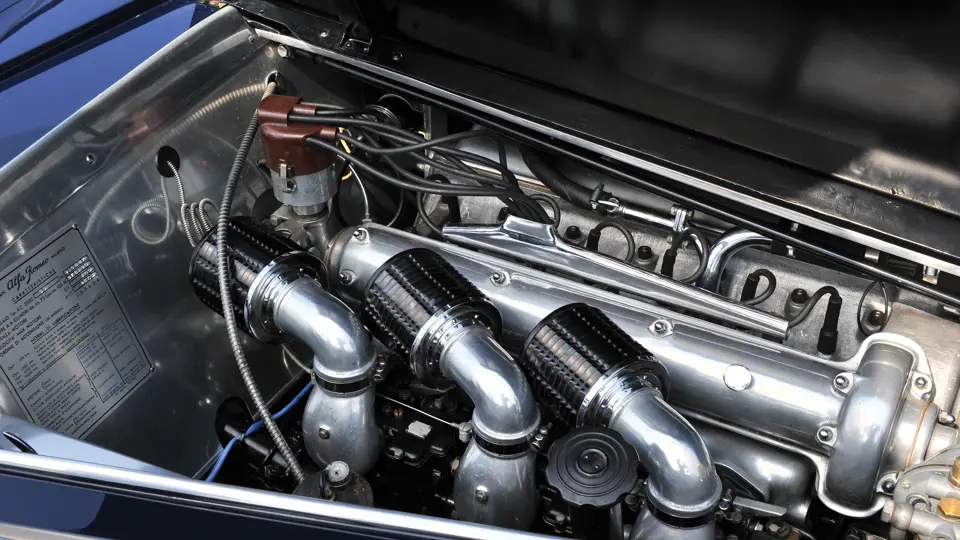



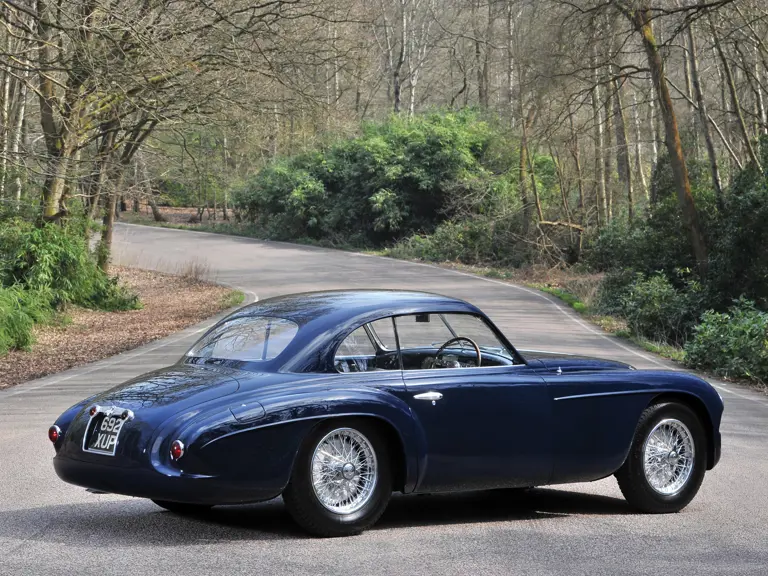

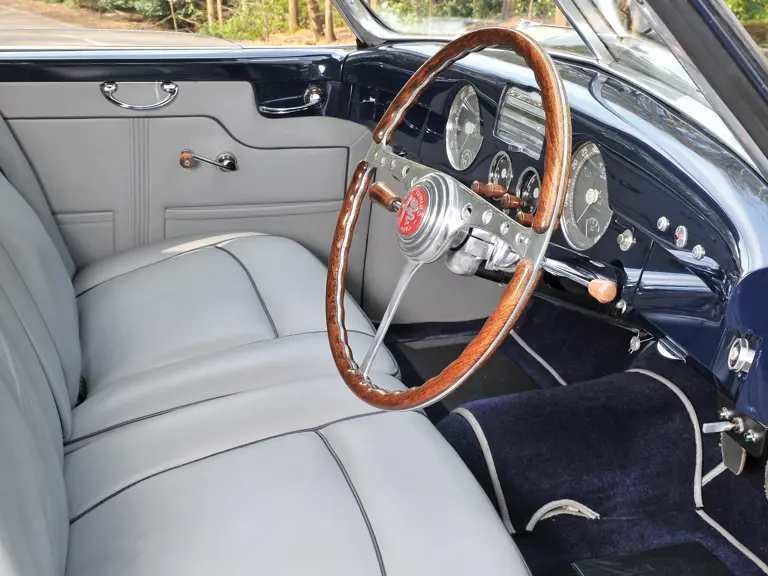
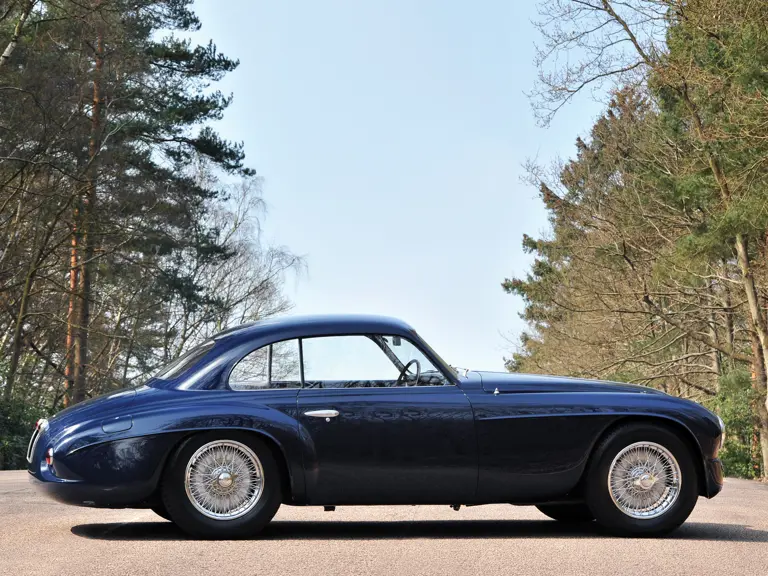

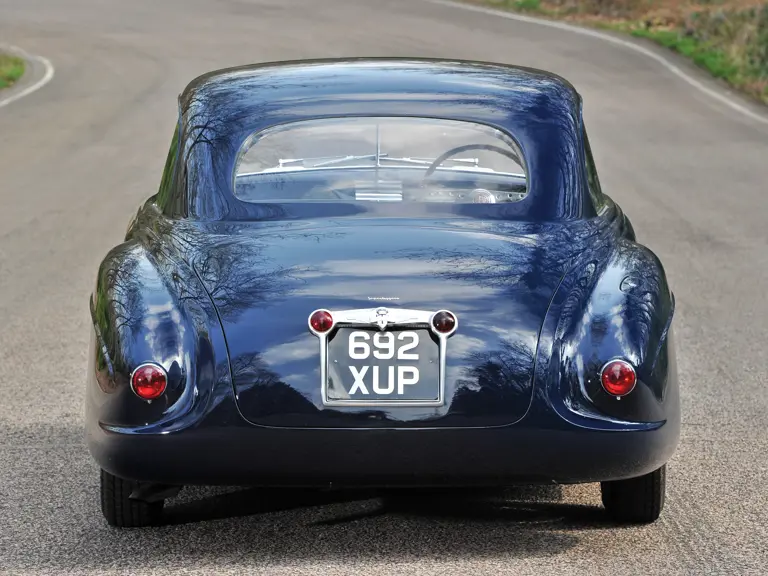
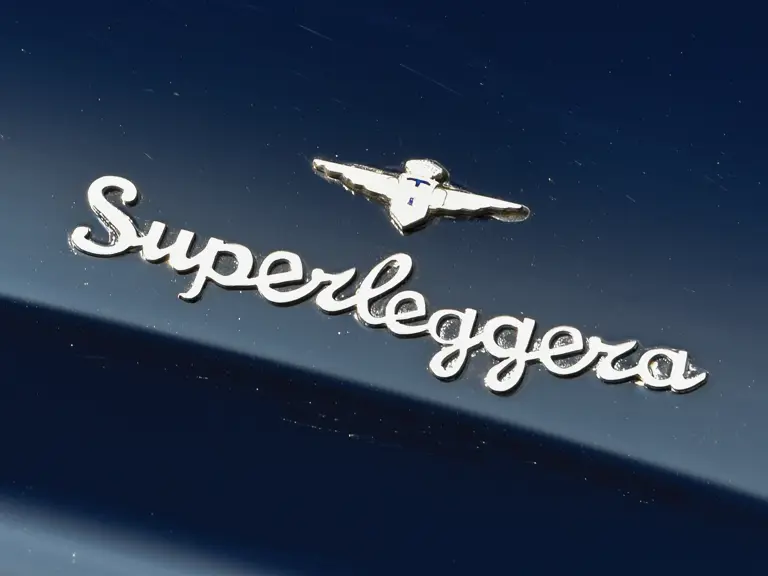
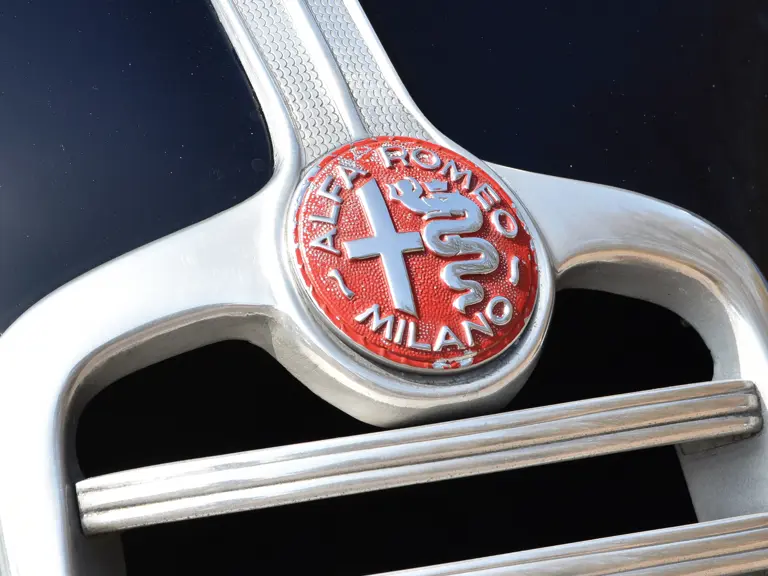
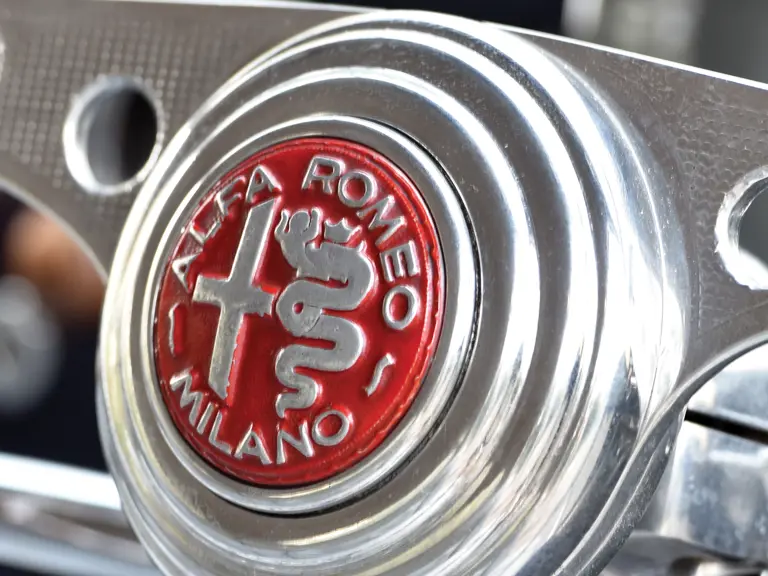
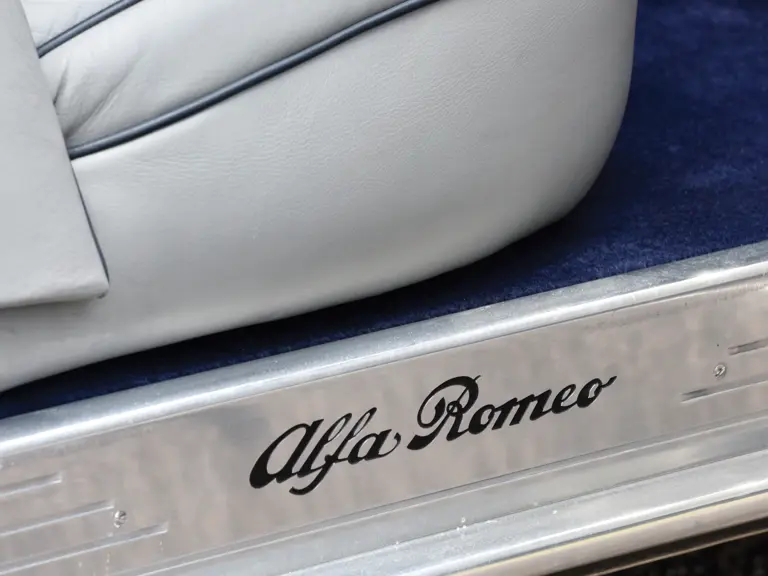

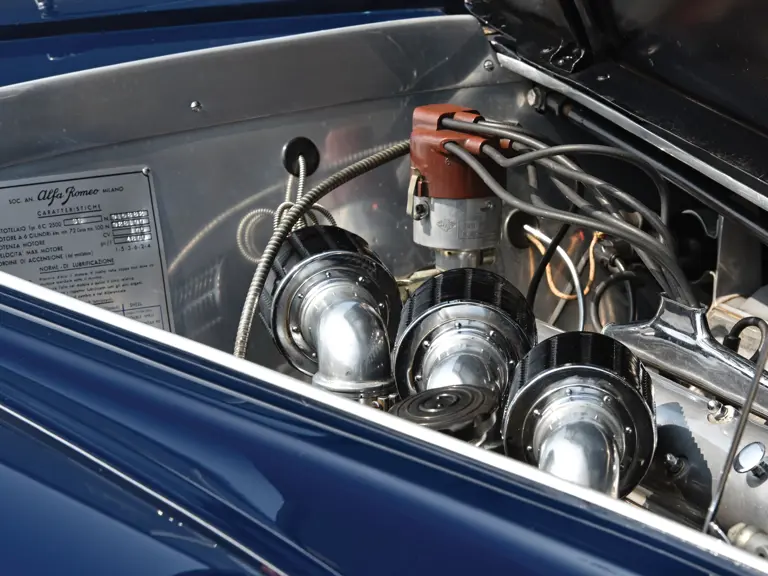
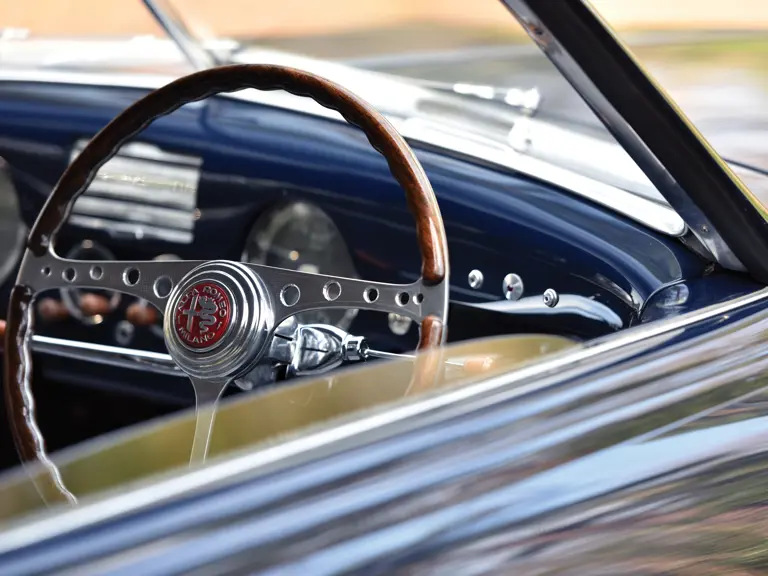
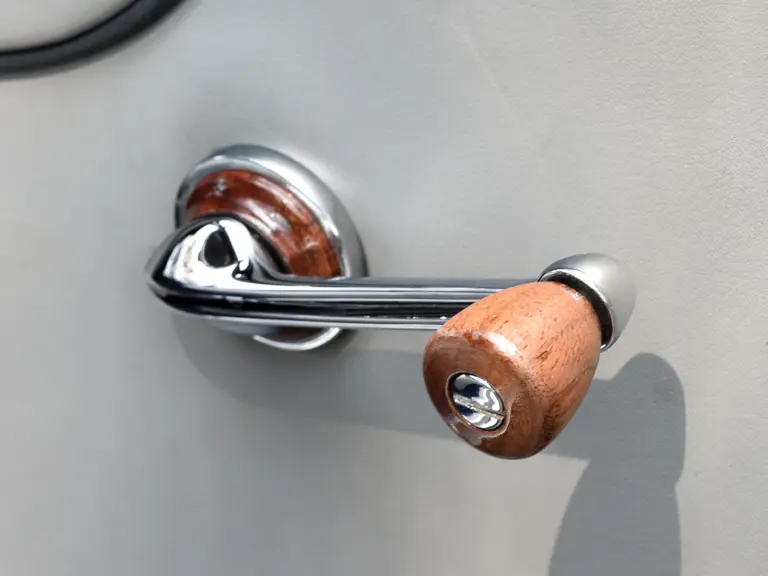


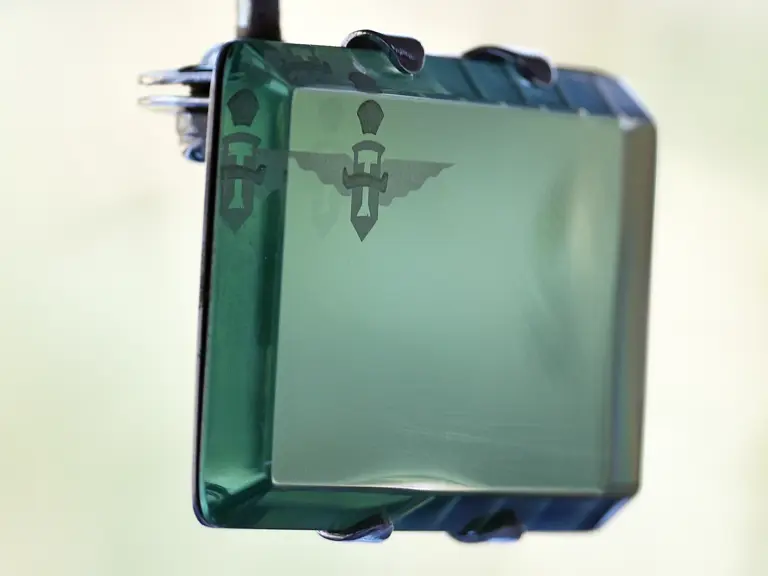
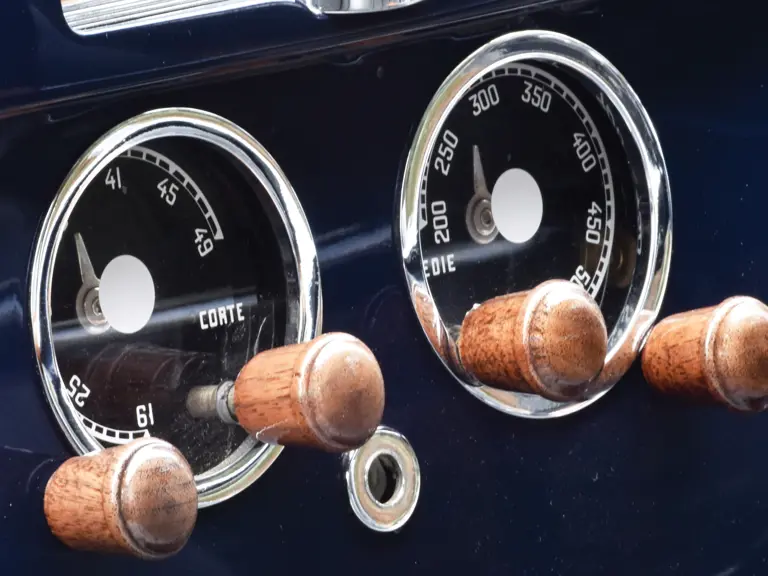
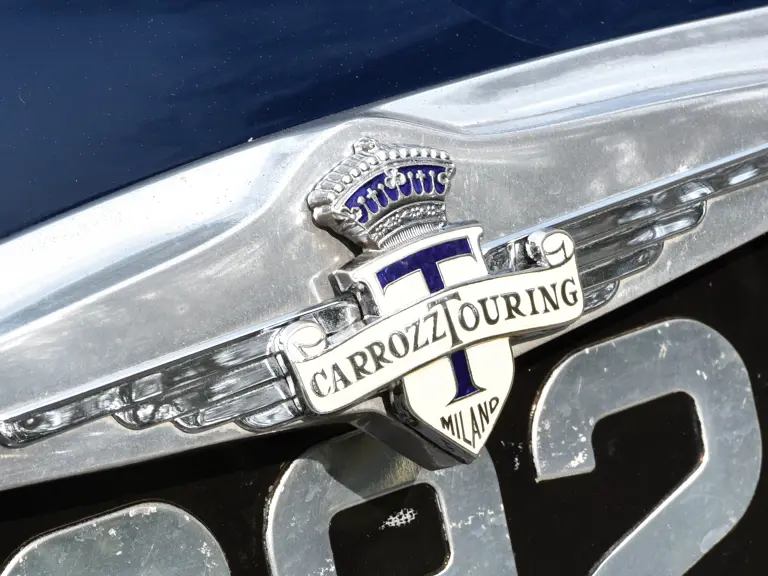
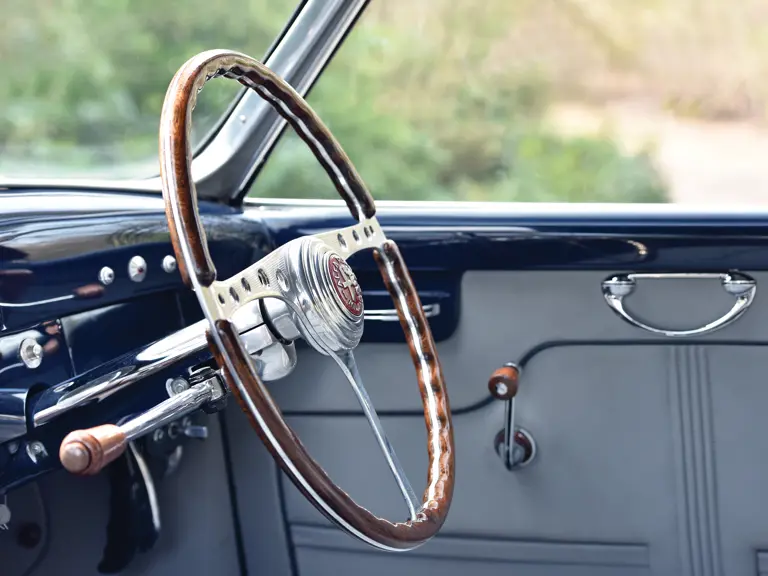
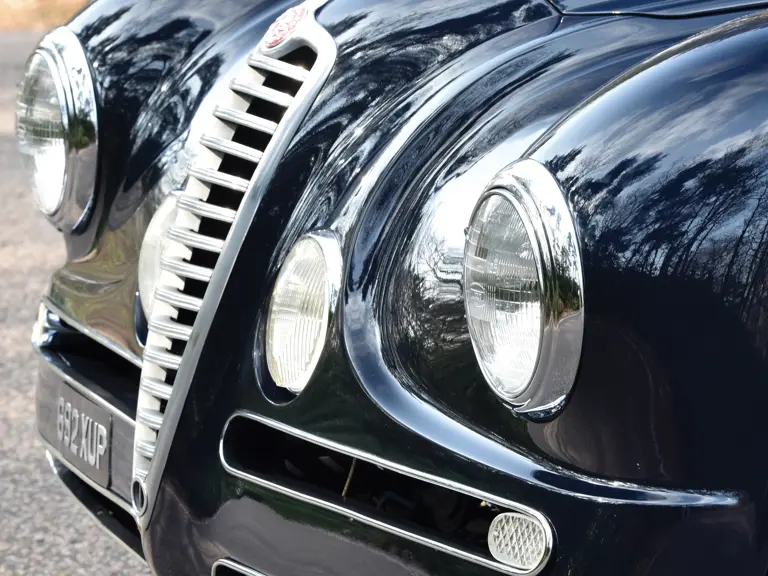
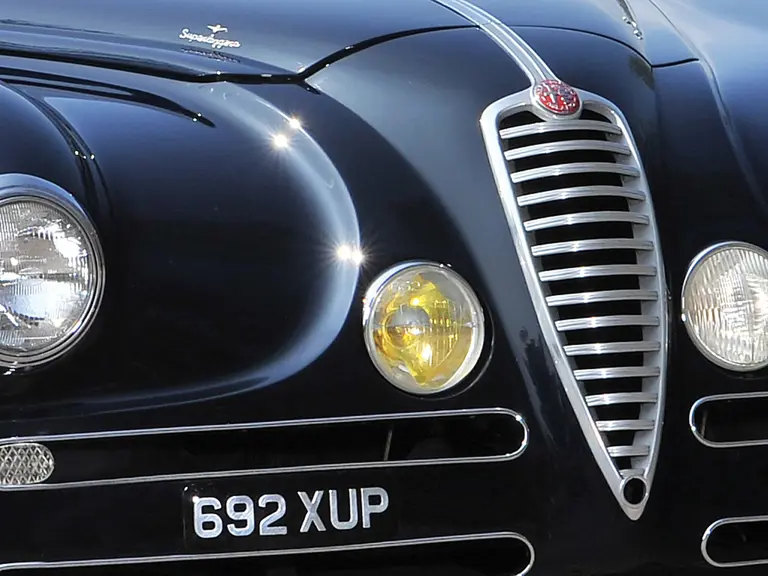
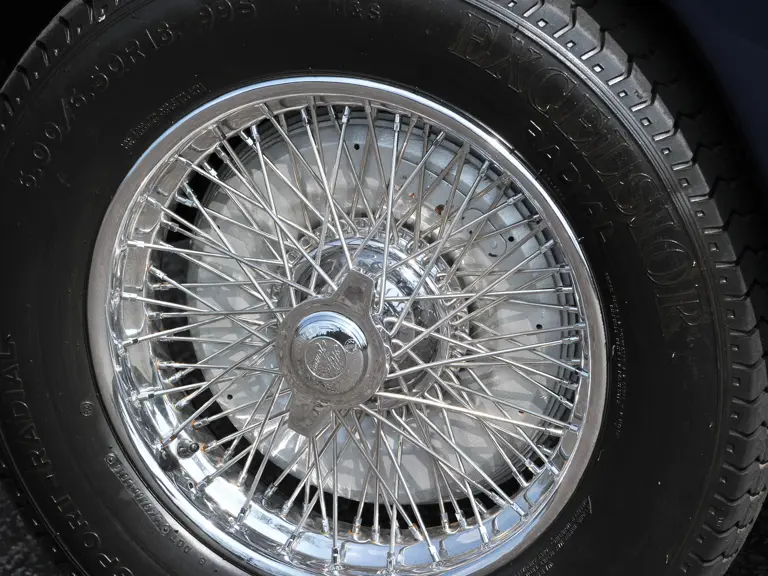
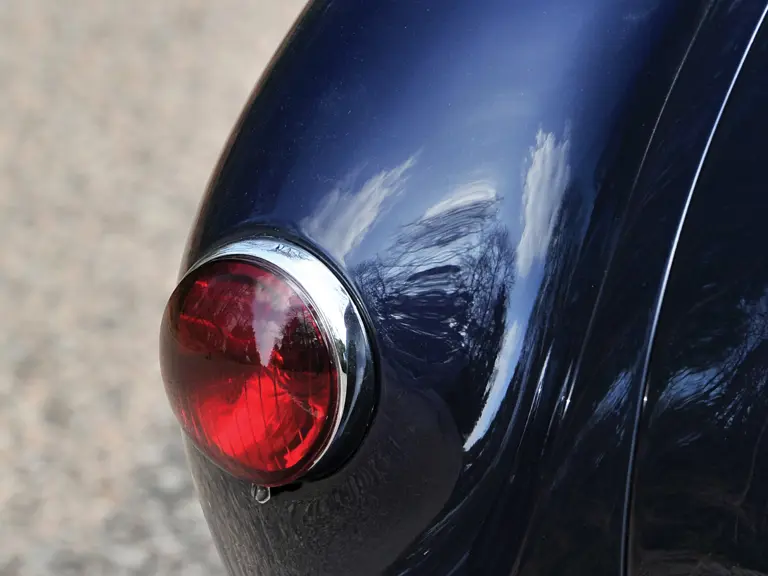

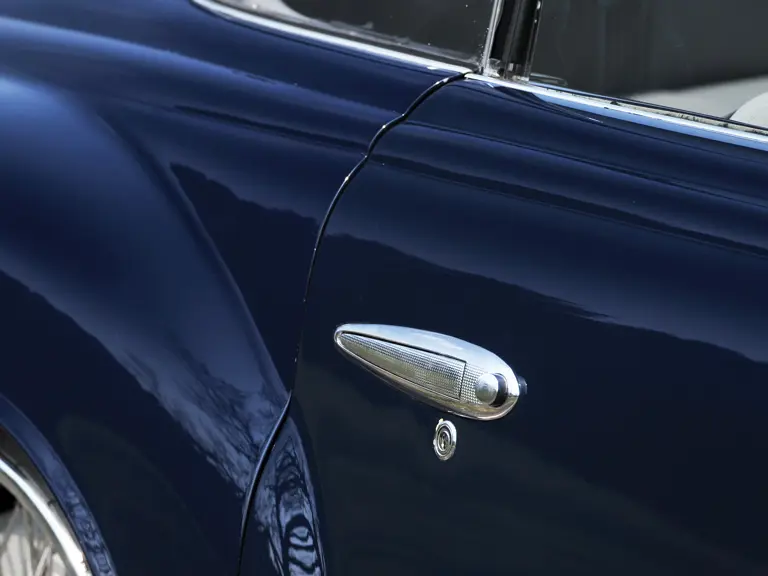
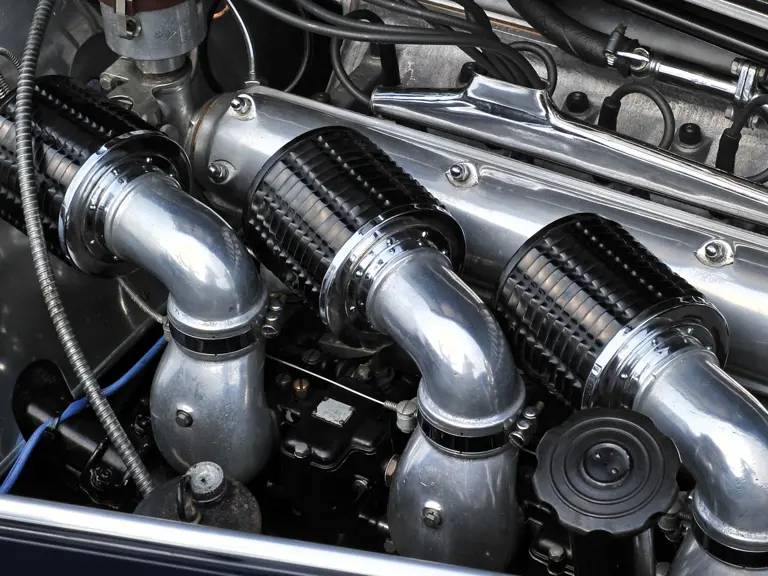
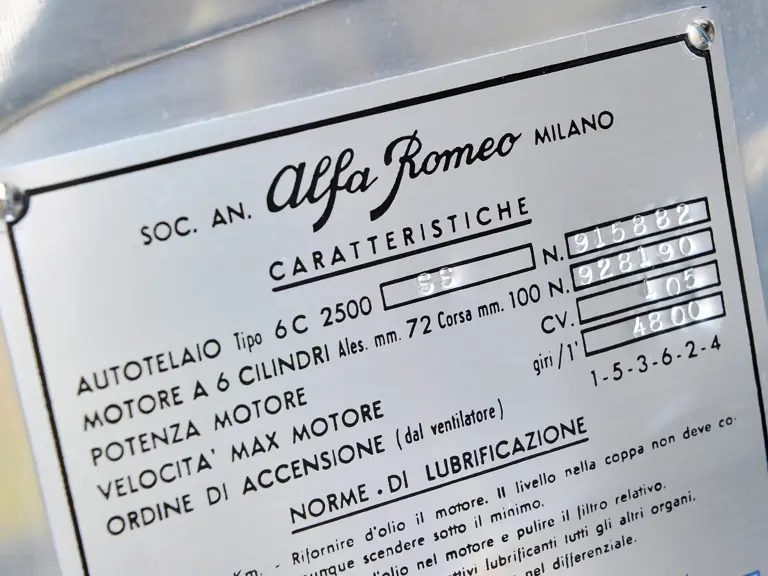

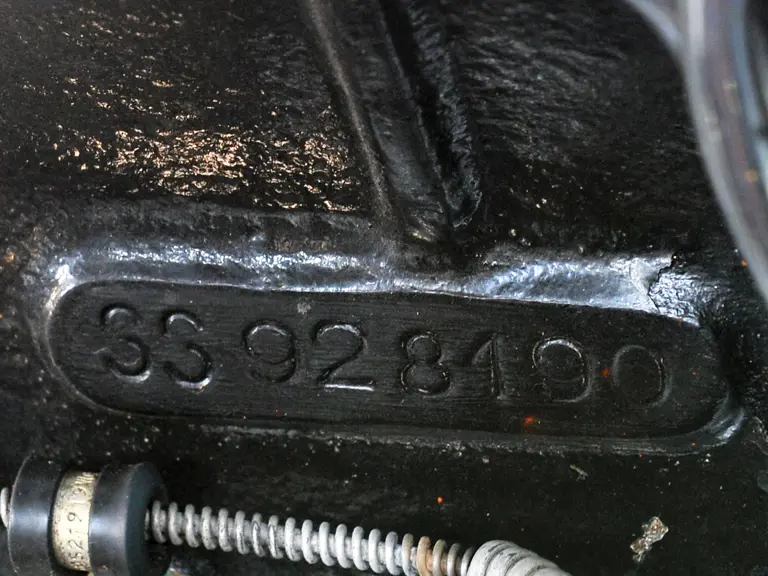
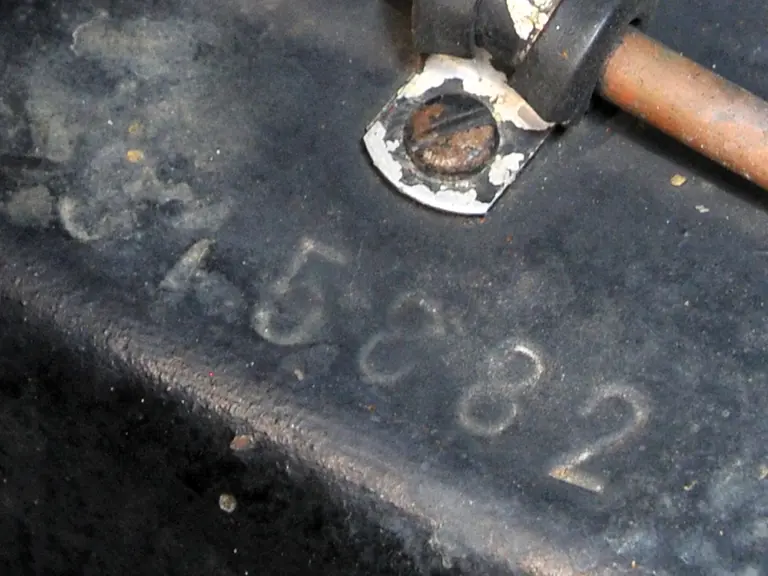
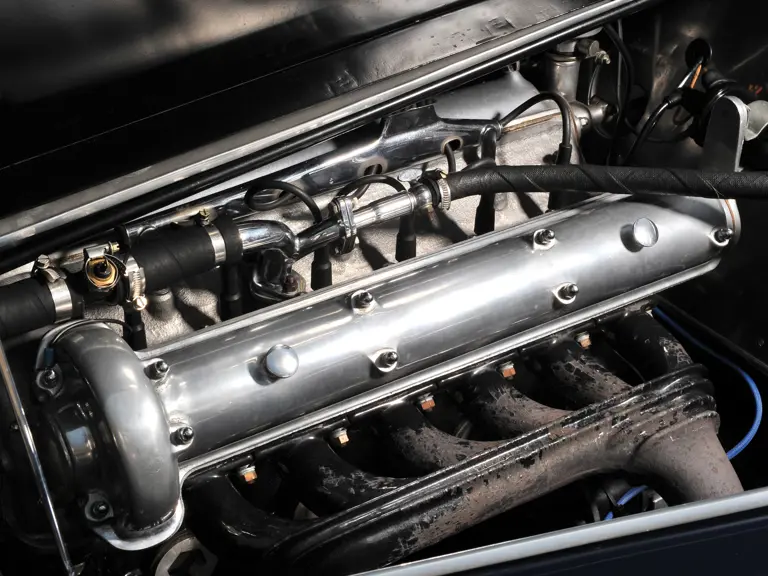



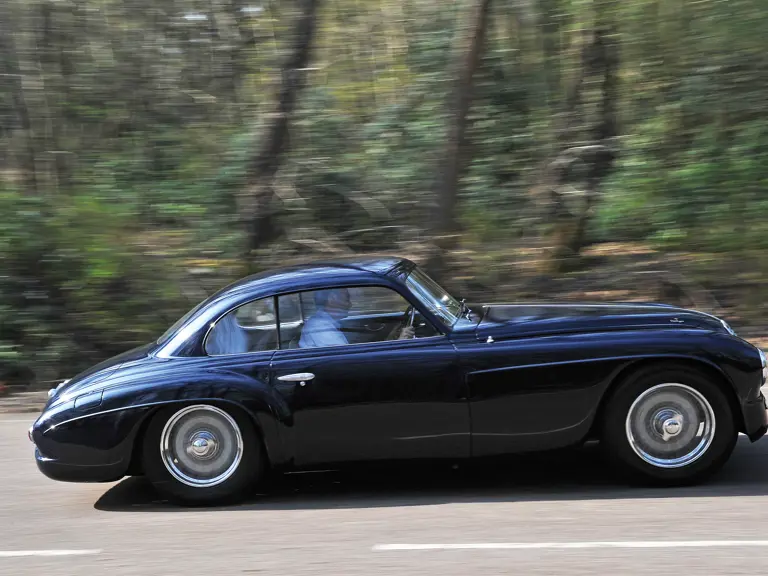
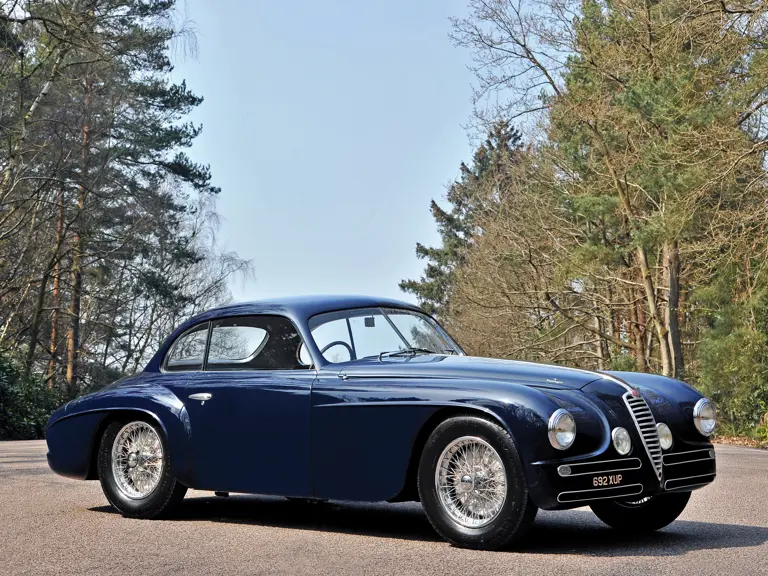
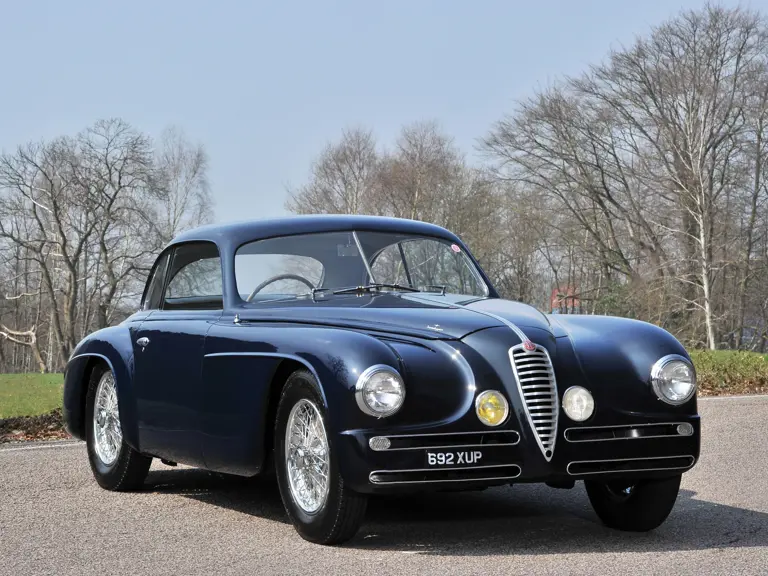
 | Cernobbio, Italy
| Cernobbio, Italy
